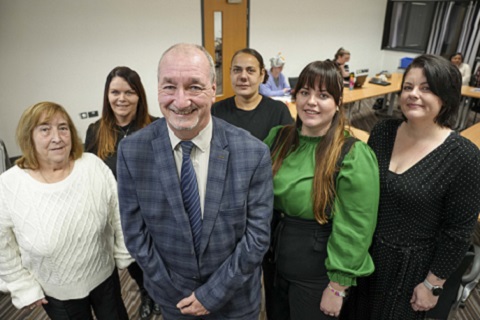Celebrating its 40th anniversary this year, the renowned Leiths School of Food and Wine presents four new books. Written by experts at the school, they are the most up-to-date, comprehensive and authoritative illustrated cookery books on the market.
Each of the easy-to-use recipe books covers a skill at the heart of the Leiths cookery repertoire, taking the reader through every aspect of preparation and cooking. Every title includes over 70 recipes, carefully chosen by the authors to highlight contemporary dishes from cuisines worldwide, as well as great classics with a modern twist.
If you've ever wondered how to knead the softest dough, shape perfect rolls and achieve a flawless rise How to Cook Bread will make you feel confident to make your own loafs, rolls and sweet and savoury flavoured bread with step by step photographic guides covering all of the essential skills.
Try their hot cross bun recipe this Easter
HOT CROSS BUNS
You can vary the dried fruit for this traditional Easter recipe: chopped dried apricots, dried cranberries, dried cherries or dried dates would all work well in place of the currants and chopped peel.
100ml milk
10g fresh yeast
2 tbsp tepid water
30g caster sugar
1 egg
250g strong plain flour,
plus extra to dust
¼ tsp salt
2–3 tsp ground mixed spice
40g butter, at room
temperature
Oil, to grease
50g currants
1 tbsp chopped mixed peel
FOR THE CROSSES
AND GLAZE
50g plain flour
Pinch of baking powder
2 tsp oil
15–30ml milk
1 tsp caster sugar
1 Pour the milk into a saucepan and bring to scalding point
over a medium heat, then remove from the heat and leave to cool to tepid, about 38°C.
2. In a small bowl, mix the yeast with the water and ½ tsp of the sugar to create a loose paste. Beat the egg and add it to the yeast mixture.
3. Put the flour, salt and mixed spice in a large bowl. Cut the butter into cubes and rub it into the flour with your fingertips. Stir in the remaining sugar.
4. Make a well in the centre and pour in the yeast mixture and three quarters of the milk, making sure all the yeast is scraped into the well. Stir with a cutlery knife, then with your fingers,
adding enough of the reserved milk to make a soft but not sticky dough.
5. Tip the dough out onto a very lightly floured surface and knead for about 8–10 minutes until smooth and elastic, using as little extra flour on the work surface as possible.
6. Place the dough in a very lightly oiled bowl and cover with lightly oiled cling film or a damp tea towel. Leave in a warm place to rise for about 1½ hours until doubled in size.
7. Transfer the risen dough to the work surface and knock it back, kneading for 2–3 minutes and adding in the currants and peel (trying to keep the currants and pieces of peel whole).
8. Divide the dough into 8 equal pieces, shape into rolls and place about 2cm apart on a large, oiled baking sheet. Flatten each slightly with the palm of your hand, then cover with oiled cling film and leave to prove until doubled in size. Meanwhile, heat the oven to 200°C/gas mark 6.
9. To make the crosses, sift the flour and baking powder into a bowl. Stir in the oil and enough cold water to make a thick but pipeable paste. Put into a piping bag fitted with a 5mm nozzle.
Once the buns have risen, mix the milk with the sugar and use to lightly brush the buns. Using a sharp knife, cut a shallow 1mm deep cross in the top of each bun and pipe a cross on top. 10 Bake in the oven for 15 minutes then brush the buns again with the sweetened milk and return to the oven for 5 minutes, or until golden brown. They should feel light and sound hollow when tapped on the base. Transfer to a wire rack to cool and serve fresh with butter, or split in half and toasted.
A note on glazing...
For extra shine, brush the cooked, cooled buns with a light sugar syrup, in place of the milk glaze.
















